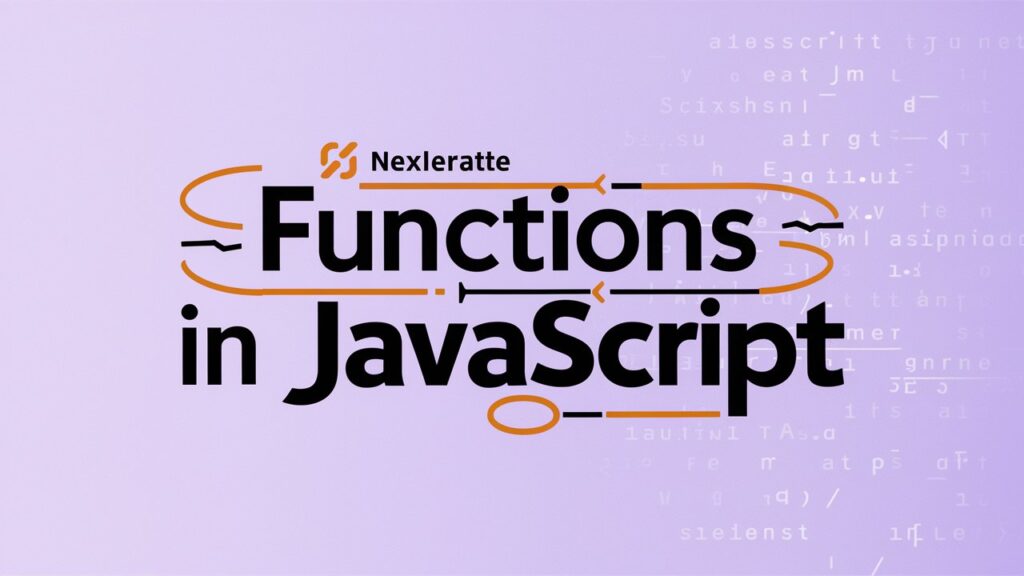Introduction to JavaScript
JavaScript, often called JS, is an advanced interpreted language that follows the ECMAScript rules. It’s a vital part of the World Wide Web next to HTML and CSS and helps make web pages interactive. JavaScript is essential for today’s web development, from simple animations to complex web applications. Yet many new learners ask: Is JavaScript hard to learn? This blog post seeks to answer that by examining different parts of JavaScript learning.
Table of Contents
Why Learn JavaScript?
JavaScript is one of the top programming languages. Its flexibility and broad application make it an essential skill for those aiming to have a career in web development. Reading JavaScript leads to many job chances, from front-end to full-stack development. Also, JavaScript’s large ecosystem, with libraries and frameworks like React, Angular, and Node.js, gives developers robust tools to build dynamic and responsive web applications.
Basic Concepts in JavaScript
Before exploring the details of JavaScript, knowing its elementary ideas is essential. These cover variables, data kinds, operators, and expressions. Variables store information, and data kinds determine what type of data a variable can contain, like numbers, strings, or booleans. Operators are marks that do operations on variables and amounts, like addition (+), subtraction (-), and comparison (==). Expressions join variables and operators to create a value.
Understanding JavaScript Syntax
JavaScript syntax is the rules for writing a correct JavaScript program. Knowing syntax is the first step in writing working code. JavaScript is case-sensitive, meaning keyword variables and function names must always have the same capitalization. The language needs a mix of keywords (like var, let, and const), punctuation (like semicolons and curly braces), and identifiers (names for variables and functions) to write commands for the computer to run.
Variables are essential in any programming language, and JavaScript is no exception. In JavaScript, you can declare variables using var, let, or const. Each keyword serves a different job: var is function-scoped, while let and const are block-scoped. JavaScript has various data types, including:
- Primitive types: Numbers, strings, booleans, null, undefined, and symbols.
- Reference types: Objects, arrays, and functions.
Knowing these data types and how to use them well is vital for any JavaScript developer.
Functions in JavaScript

Functions are code chunks meant to do specific jobs. They are a central part of JavaScript. You can make functions using the function keyword or arrow functions from ES6. Functions can take in parameters and give back values, allowing you to use the same code many times. Knowing functions well is critical to creating excellent and neat JavaScript code.
JavaScript Control Structures
Control structures set the way a program runs. JavaScript has many control structures, such as:
- Conditional statements: if, else, if, and else.
- Switch statements: These are used to choose from many paths.
- Loops: for, while, do…while.
These buildings let developers make detailed logic and manage the execution sequence depending on various situations.
Arrays and objects are two fundamental data types in JavaScript. Arrays hold many values in one variable and offer different methods to manage these values. Objects are groups of key-value pairs. Knowing how to handle arrays and objects is crucial to manage and organize data in JavaScript programs.
DOM Manipulation with JavaScript
The Document Object Model (DOM) is a web document programming tool. It shows the format of a web page as a set of nodes in tree form, enabling JavaScript to work with and change the text and layout of the document. Usual tasks for manipulating the DOM are choosing elements, changing text, and dealing with events. Tools like jQuery make changing the DOM more accessible, but knowing the basic DOM methods is vital for web development.
JavaScript Events and Event Handling
Events like clicks, key presses, and page loads happen in the browser. Event handling captures these events and runs specific codes in response. JavaScript has several methods to handle events, including inline event handlers, event listener methods, and event delegation. Knowing event handling is essential to make interactive and responsive web applications.
Debugging and Error Handling in JavaScript
Debugging is finding and correcting mistakes in your code. JavaScript developers can use robust tools for debugging, such as browser developer tools, which offer options like breakpoints, watch expressions, and step-through debugging. Managing errors involves expecting and controlling mistakes using try…catch blocks and custom error objects. Good debugging and error management are essential skills for keeping JavaScript applications strong.
JavaScript Libraries and Frameworks
The JavaScript world has many libraries and frameworks that boost the speed and development abilities. Well-known libraries such as jQuery make altering the DOM and making AJAX requests easier. Frameworks such as React, Angular, and Vue.js offer solid options for creating detailed single-page apps. Knowing when and how to help these libraries and frameworks can speed development and increase code quality.
Common Challenges When Studying JavaScript

Learning JavaScript has its own complex parts. These can include learning to program non-synchronously, improving the fine points of the language’s syntax, and handling how different browsers react differently. Also, JavaScript keeps changing often, which makes it hard to stay current with new parts and the best ways to use them. Still, these problematic parts can be overcome with persistence and the right resources.
Functions in JavaScript
Functions are code chunks meant to do specific jobs. They are a central part of JavaScript. You can make functions using the function keyword or arrow functions from ES6. Functions can take in parameters and give back values, allowing you to use the same code many times. Knowing functions well is critical to creating excellent and neat JavaScript code.
JavaScript Control Structures
Control structures set the way a program runs. JavaScript has many control structures, such as:
- Conditional statements: if, else, if, and else.
- Switch statements: These are used to choose from many paths.
- Loops: for, while, do…while.
These buildings let developers make detailed logic and manage the execution sequence depending on various situations.
Arrays and objects are two key data types in JavaScript. Arrays hold many values in one variable and offer different methods to manage these values. Objects are groups of key-value pairs. Knowing how to handle arrays and objects is crucial to manage and organize data in JavaScript programs.
DOM Manipulation with JavaScript
The Document Object Model (DOM) is a web document programming tool. It shows the format of a web page as a set of nodes in tree form, enabling JavaScript to work with and change the text and layout of the document. Usual tasks for manipulating the DOM are choosing elements, changing text, and dealing with events. Tools like jQuery make changing the DOM easier, but knowing the basic DOM methods is vital for current web development.
JavaScript Events and Event Handling
Events like clicks, key presses, and page loads happen in the browser. Event handling captures these events and runs specific codes in response. JavaScript has several methods to handle events, including inline event handlers, event listener methods, and event delegation. Knowing event handling is essential to make interactive and responsive web applications.
Debugging and Error Handling in JavaScript
Debugging is finding and correcting mistakes in your code. JavaScript developers can use robust tools for debugging, such as browser developer tools, which offer options like breakpoints, watch expressions, and step-through debugging. Managing errors involves expecting and controlling mistakes using try…catch blocks and custom error objects. Good debugging and error management are essential skills for keeping JavaScript applications strong.
JavaScript Libraries and Frameworks
The JavaScript world has many libraries and frameworks that boost the speed and development abilities. Well-known libraries such as jQuery make altering the DOM and making AJAX requests easier. Frameworks like React, Angular, and Vue.js offer strong options for creating detailed single-page apps. Knowing when and how to help these libraries and frameworks can speed up development and increase code quality.
Common Challenges When Studying JavaScript
Learning JavaScript has its own complex parts. These can include learning to program non-synchronously, improving the fine points of the language’s syntax, and handling how different browsers react differently. Also, JavaScript keeps changing often, which makes it hard to stay current with new parts and the best ways to use them. Still, these problematic parts can be overcome with persistence and the right resources.
Tips to Learn JavaScript Well
Here are some tips to help you learn JavaScript well:
- Practice often: Regular practice is vital to mastering any programming language.
- Create projects: Use what you learn to make small projects.
- Get involved in communities: Participate in online discussions, attend meetups, and join coding groups.
- Utilize online tools: Use tutorials, documentation, and courses.
- Try to fix errors often: Practice finding and correcting your errors.
Sources to Learn JavaScript
There are many sources available to learn JavaScript, including:
- Online tutorials: Websites like freeCodeCamp, Codecademy, and MDN Web Docs provide comprehensive tutorials.
- Books: “Eloquent JavaScript” by Marijn Haverbeke and “JavaScript: The Good Parts” by Douglas Crockford come recommended.
- Video courses: Platforms such as Udemy, Coursera, and Pluralsight offer video courses on JavaScript.
Real-World Applications of JavaScript
JavaScript greatly influences real-world applications, from basic web page improvements to complicated web systems. Common uses include:
- Web development: Making web pages that interact and change.
- Server-side development: Using Node.js to create server programs that can grow.
- Mobile app development: Making apps for many types of phones with tools like React Native.
- Game development: Making games that you can play in a browser.
Comparing JavaScript with Other Programming Languages
JavaScript has its own advantages and challenges when compared to other programming languages. For instance, JavaScript handles many tasks simultaneously, and its event-based design is suitable for making websites. But this might be hard for newcomers to learn. On the other hand, languages like Python are easy to read and simple, which makes them easy to understand. However, they might need to improve at adding interactive features to websites.
Conclusion: Is JavaScript Hard to Learn?
In sum, learning JavaScript is challenging, depending on many things. These include your past programming skills and how you learn. JavaScript might be complicated for those new to programming because of its different syntax and asynchronous style. Yet, mastering JavaScript is possible with effort, practice, and sound resources. Its flexibility, everyday use, and substantial abilities make it valuable for anyone who wants to create websites. So, is JavaScript hard to learn? It might be challenging initially, but with continuous effort, it becomes an essential ability in your programming set.
